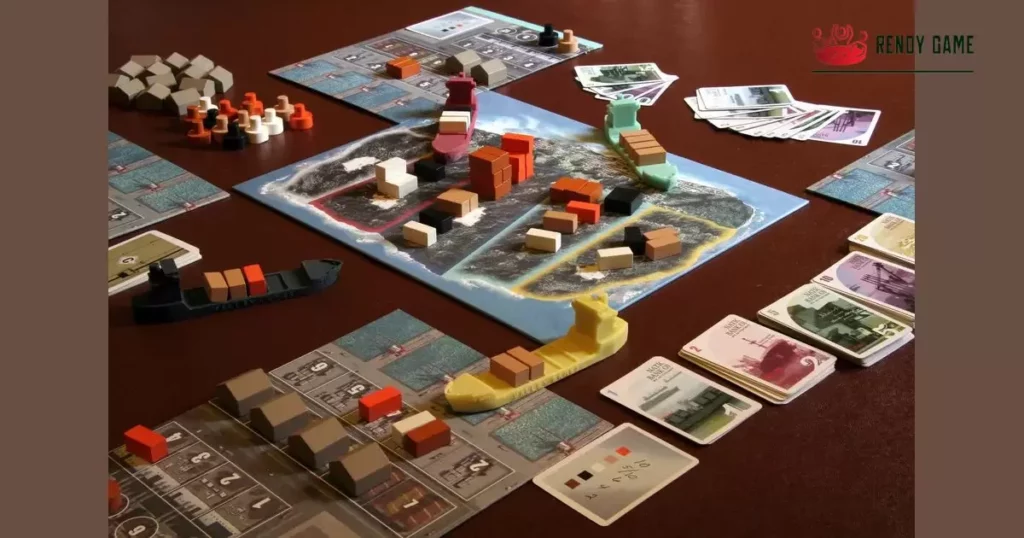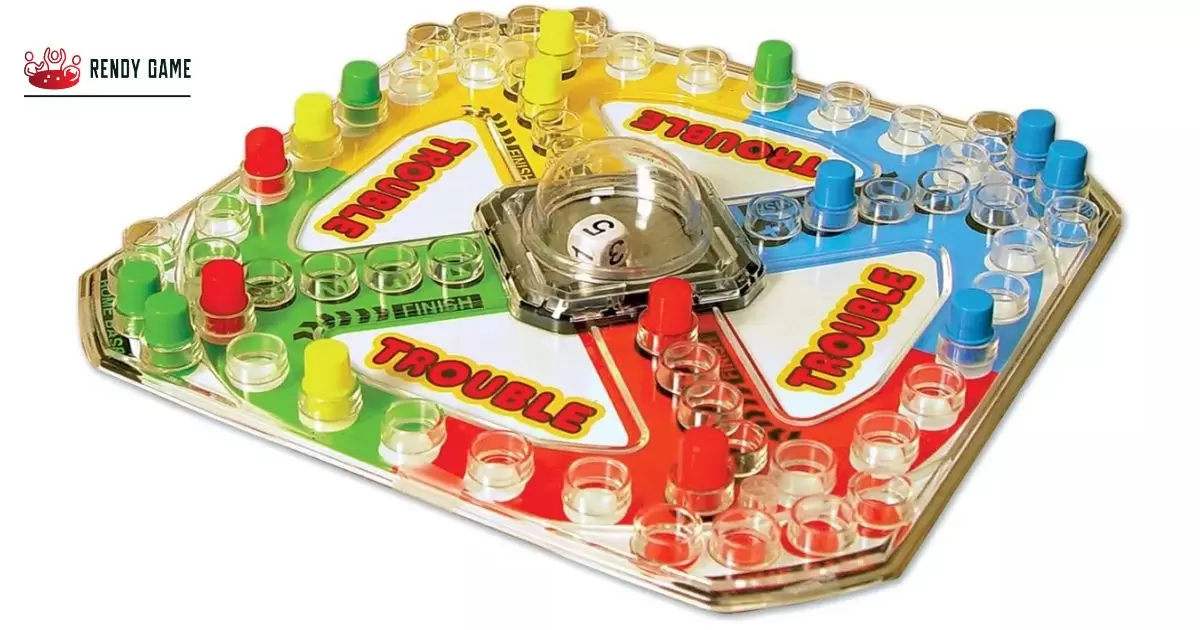Trouble Board Game, a classic family board game, is a delightful and engaging game that can be enjoyed by players of all ages. The objective of this game is to move your game pieces around the board while trying to send your opponents’ pieces back to the starting point. It’s a game of strategy, chance, and a lot of fun.
How To Play Trouble Board Game? This age-old question often sparks curiosity among new players and seasoned enthusiasts alike. The game’s simplicity in concept is complemented by its intriguing mechanics, where a roll of the dice can change the course of the game in an instant. Learning the rules and strategies for Trouble is not only an enjoyable endeavor but also a gateway to memorable family game nights and friendly competitions with friends.
Playing Trouble Board Game involves each player racing their game pieces around the board, attempting to be the first to reach the finish line. With the use of a unique pop-o-matic dice roller, players must make strategic decisions on which game pieces to move and when, all while avoiding their opponents’ efforts to send them back to the start.
Objective
The objective of Trouble is to move your game pieces around the board and be the first to get them all to the finish line. But it’s not as simple as it sounds. The game combines strategy and chance, making it a delightful and competitive experience for players of all ages.
Best Kids Board Games for Age 5 and Above
Trouble is a fantastic choice for kids aged 5 and older. In this section, we’ll explore why it’s one of the best board games for children in this age group.
Benefits of Playing Board Games for Kids
Board games offer numerous benefits for children. They enhance cognitive skills, promote social interaction, and provide a break from screen time. Trouble, in particular, is an excellent choice as it’s easy to learn, keeps kids engaged, and encourages healthy competition.
Recommended Fun for Friends and Family Card Games List
While Trouble is a fantastic game for family and friends, there are other enjoyable games you should consider. In this section, we’ll introduce you to some card games that can provide hours of fun and bonding.
Exploring Other Enjoyable Games
In addition to Trouble, there’s a wide variety of card games that can entertain friends and family. Whether you prefer strategy, luck, or a mix of both, there’s a card game for everyone. Here are a few recommendations to add to your collection:
| Game Title | Players | Age Range | Playing Time | Description |
| Uno | 2-10 | 7+ | 30 minutes | A classic card game known for its colorful deck. |
| Apples to Apples | 4-8 | 12+ | 30-75 minutes | A hilarious party game that relies on creativity. |
| Exploding Kittens | 2-5 | 7+ | 15 minutes | A quick-paced game full of surprises and strategy. |
| Codenames | 2-8+ | 14+ | 15-30 minutes | A word game that tests your communication skills. |
Step-by-Step Game of Trouble Rules
Starting the Game
Before diving into the rules of Trouble, let’s get started with the basics of setting up the game and preparing to play.
Game Board Setup
Trouble is played on a colorful, circular game board with a pop-o-matic dice roller in the center. Each player’s goal is to navigate their four pegs from the starting area around the board and into the home column.
Players
The game is designed for 2 to 4 players, and each player or team has a set of four colored pegs. To start, choose your color and place your pegs in the starting area that matches your color.
Rolling the Dice
Trouble uses a unique pop-o-matic dice roller. To determine how many spaces to move a peg, press the dome in the center of the roller. This pops the dice inside, revealing the number of spaces to advance.
Move Your Peg Out of Home
Now that you’ve set up the game board and chosen your color, it’s time to start moving your pegs. This section covers the initial steps in Trouble gameplay.
The First Move
To get your pegs out of the starting area and onto the game track, you need to roll a six. When you roll a six, you can move one of your pegs out and onto the track. If you don’t roll a six, it’s the next player’s turn.
Advanced Moves
Once your pegs are on the track, the objective is to move them around the board clockwise, following the numbered spaces. You can move your peg the number of spaces shown on the rolled dice. If your peg lands on a space already occupied by an opponent’s peg, you send the opponent’s peg back to their starting area.
Safety Zones
There are special safety zones on the game track, marked with your color. Your pegs are safe while in these zones, and they cannot be sent back to the starting area by opponents. Use these zones strategically to protect your pegs.
Moving Pegs on the Playing Track

As the game progresses, you’ll encounter various situations while moving your pegs. This section covers some key rules and strategies for advancing your pegs on the playing track.
Navigating the Track
The playing track consists of a series of spaces numbered from 1 to 56. Your pegs move clockwise along this track. To advance, you need to roll the dice and move your peg the number of spaces shown.
Popping the Dice
Remember to use the pop-o-matic dice roller for each turn. The popping mechanism adds an element of surprise and excitement to the game.
Strategy Tips
While Trouble involves a fair amount of luck, strategic decisions also play a significant role. Consider which peg to move based on the dice roll. Do you prioritize getting a peg out of the starting area, or do you aim to move a peg closer to the finish line? Assess the game board and your opponents’ positions to make the best choices.
Special Moves
There are also special spaces on the track marked with a “Safe” symbol. These spaces are safe zones for your pegs, protecting them from being sent back to the starting area by opponents. Utilize these safe spaces to your advantage.
Sending Opponent’s Pegs Home
One of the most thrilling aspects of Trouble is sending your opponents’ pegs back to their starting area. This section explains the rules and strategies behind this exciting part of the game.
Landing on an Opponent’s Peg
If your peg lands on a space occupied by an opponent’s peg, you get the satisfaction of sending their peg back to their starting area. Your peg then takes the opponent’s place on that space.
Blocking Your Opponents
Strategically placing your pegs on spaces next to your opponents can prevent them from advancing in the marble board game. By doing so, you increase the chances of sending their pegs back to the starting area and giving yourself an advantage.
Paying Attention to Your Pegs
While focusing on sending opponents back, be mindful of your own pegs. Keep them spread out on the track to minimize the risk of multiple pegs getting sent back at once.
Finish Line
Reaching the finish line is the ultimate goal in Trouble. This section explains what happens when your pegs approach the finish and how to secure your victory.
The Home Column
The home column is a special section of the game board located just before the finish line. Your pegs need to land on an exact number to enter the home column. For example, if your peg is two spaces away from the finish, you must roll a two to enter the home column.
Winning the Game
The first player to get all of their pegs into the home column is the winner. This player is declared the Trouble champion.
Potential Tiebreakers
In some cases, two or more players might have their last pegs reach the finish line simultaneously. In such situations, the player who rolled the exact number to enter the home column wins. If a tie still exists, those players share the victory.
FAQs
What is Trouble Board Game, and who can play it?
Trouble is a classic family board game suitable for 2 to 4 players, and it’s perfect for players aged 5 and above.
How do I start playing Trouble?
To begin, set up the game board, select your color, and roll the dice until you get a six to move your peg out of the starting area.
What happens if I land on a space with an opponent’s peg?
If your peg lands on a space occupied by an opponent’s peg, you get the satisfaction of sending their peg back to their starting area.
What’s the goal in Trouble?
The objective is to be the first to get all your pegs into the home column, just before the finish line, and declare yourself the winner.
Are there any strategies to keep in mind while playing Trouble?
Yes, strategic decisions like which peg to move and how to use safe zones can give you an edge in this game of chance and skill.
Conclusion
Trouble is a game that combines strategy, luck, and social interaction, making it a perfect choice for family game nights and gatherings with friends. By understanding the rules and strategies, you can enhance your enjoyment of this classic board game. Remember, while winning is enjoyable, the real fun comes from spending quality time with loved ones and sharing moments of laughter and competition around the game board. So, set up the game, pop the dice, and embark on a thrilling journey through the Trouble board.

